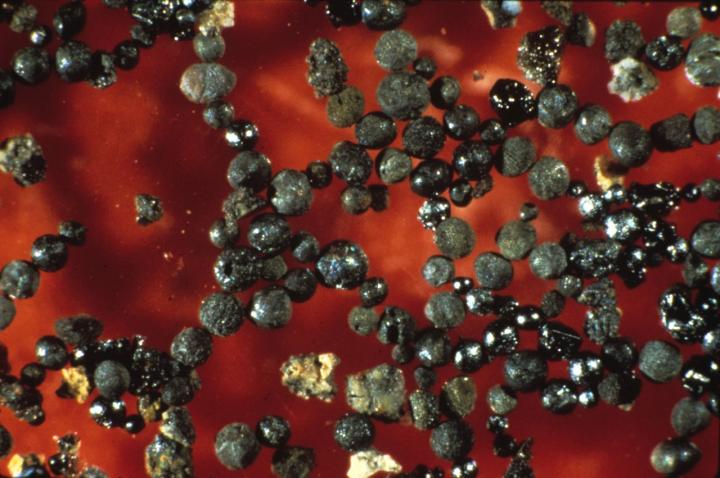
These micrometeorites were recovered from the ocean floor. They have an average diameter of about one millimeter. Credit: Donald Brownlee/University of Washington
When I look down into a petri dish filled with sand through a binocular microscope, the largest grains become obelisks, and the smallest form avenues between them. It’s a microscopic echo of the Chicago cityscape I can see through the window when I look up. I’m at the Field Museum of Natural History, home of the Robert A. Pritzker Center for Meteorite and Polar Studies. The museum has lots of big objects: dinosaurs, elephants, and some very important meteorites. But today, I’m thinking about small things. The meteorites I’m looking for are hiding in the sand beneath my microscope. Maybe.
The sand came from the Sør Rondane Mountains in Antarctica, brought here by Maria Valdes, a research assistant at the Museum, who traveled there with an expedition looking for meteorites. They found several, including a extra large space rock It weighs 16.7 pounds (7.6 kilograms). Finding a meteorite that size is a rarity, but for this particular project, you need something small: micrometeorites.
Cosmic origins
About 40,000 metric tons of extraterrestrial material rain down on planet Earth every year. We can often see fragments of this material streaking across the night sky in the form of meteorites. If any part of a meteorite survives its fiery descent through the atmosphere to reach Earth's surface, we call it a meteorite. Sometimes those meteorites are relatively large — boulder-sized chunks of iron or small, blackened rocks. But most of the material arrives here in the form of micrometeorites, usually less than 0.04 inches (1 millimeter) in size.
Related: Colorado town celebrates 100th anniversary of pet space rock
For meteorologists, the scientists who study meteorites, they are cosmic messengers carrying information about their origins in the solar system. Most meteorites originate in the main belt, a region of rocky bodies orbiting the Sun between Mars and Jupiter. Over time, some of them collide and break up, hurling bits of debris into the inner solar system, where their paths can intersect with Earth's. Fragments from a single collision can fall on our planet in widely separated locations, sometimes millions or even hundreds of millions of years apart. But they still have one thing in common: They retain the characteristics of the asteroid they came from, called the parent body.
Chromite is a mineral often found in meteorites. It is a durable combination of chromium and oxygen that can withstand the heat entering the atmosphere and long periods of weathering on the Earth's surface. This makes it a good memory bank for the properties of its parent body. Although all chromite samples are chemically the same, the nuclear properties of the oxygen they contain can differ. All oxygen atoms have eight protons, but they can have eight, nine, or ten neutrons, giving rise to the isotopes we call oxygen-16, oxygen-17, and oxygen-18, respectively. The oxygen found on Earth consists of these isotopes in the ratio 99.76:0.04:0.20. However, in asteroids and meteorites, this ratio can vary. What's more, it can differ from one parent body to another, allowing meteorologists to match a meteorite to its parent body by measuring the ratio of oxygen isotopes using a mass spectrometer.
Over time, meteorologists have assembled a record of isotopic ratios for different parent bodies, so that a newly discovered meteorite can be compared to it and its origin often identified. But Valdes sees a potential problem with the technique. What if a meteorite’s oxygen content had been altered during its descent through our oxygen-rich atmosphere? Small meteorites, which might have been mostly or even entirely melted during descent, would be especially susceptible to this. His project (the one that has me peering into a petri dish and poking grains of sand with tweezers) is testing a different way to identify where meteoritic material originated.
In addition to chromite, meteorites often contain calcium-containing minerals. Calcium also has several naturally occurring isotopes, so measuring its isotopic ratios offers an alternative technique for studying meteorites. “The method for isolating and measuring calcium isotopes is well established for meteorites,” says Valdes, but making these measurements on micrometeorites is new.
While mass spectrometry to measure oxygen isotopes largely spares the micrometeorite from damage, testing for calcium destroys it completely. That means that establishing calcium ratios requires looking at a lot of micrometeorites and digging through a lot of sand.
Grains of sand
So why go all the way to Antarctica to look for sand? There's plenty of sand right outside, by Lake Michigan. And it also contains micrometeorites. Unfortunately, it also contains soot and slag from several centuries of human occupation. These particles can confuse the picture. In my search for micrometeorites, I look for objects that are about the size of a grain of sand, but don't look like sand. With the microscopic remnants of civilization mixed in, it's even more like looking for a needle in a haystack.
Yet Antarctica's Sør Rondane mountain range remains a pristine place, virtually uncontaminated by human activity. In its sand, micrometeorites are more likely to pop up. “It's still like looking for a needle,” says Valdes, “but at least there's no haystack.”
The shapes I'm looking for are spheres, not needles. When rocky debris passes through the atmosphere, frictional heat melts its surface, creating a blackened crust about a millimeter thick. If the object itself is only a few millimeters wide, then it might melt completely. When this happens, the molten material assumes the most aerodynamic shape possible: a sphere. And that helps it stand out from the blocky grains of sand I'm observing.
In fact, I see one that looks round. Press it with the tweezers. No, it's not a sphere. Keep looking.
After several days in the lab, I pulled 15 round objects out of the Antarctic sand and carefully placed them on epoxy pads in plastic specimen boxes. I doubt that all of them are actually micrometeorites. Honestly, I can't swear that any of them are. Valdes tells me that they will have to be examined with a scanning electron microscope to determine what they are.
I hope I've found at least some micrometeorites, but even if not, there's still a lot of sand left.







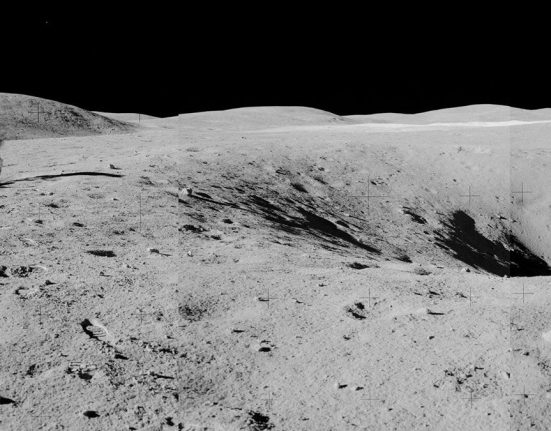
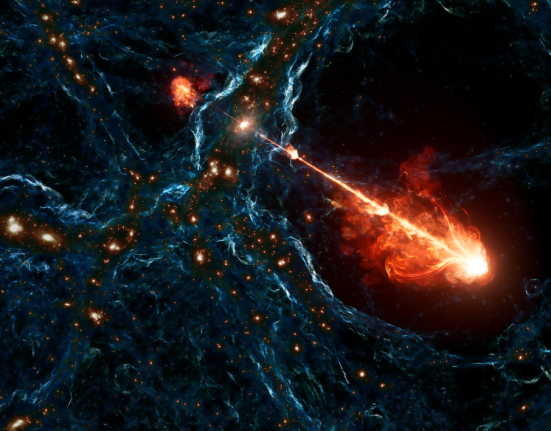
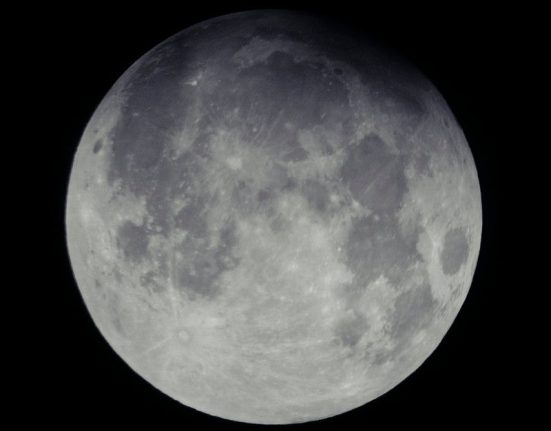

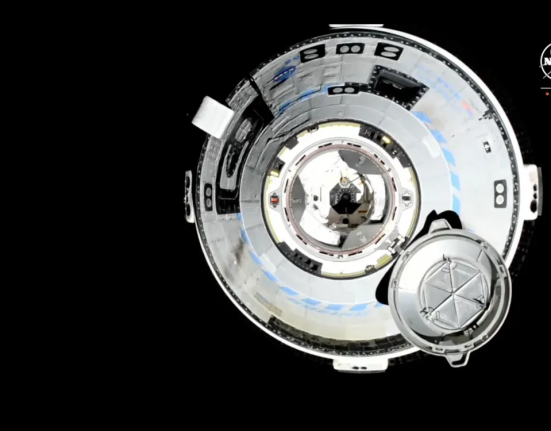
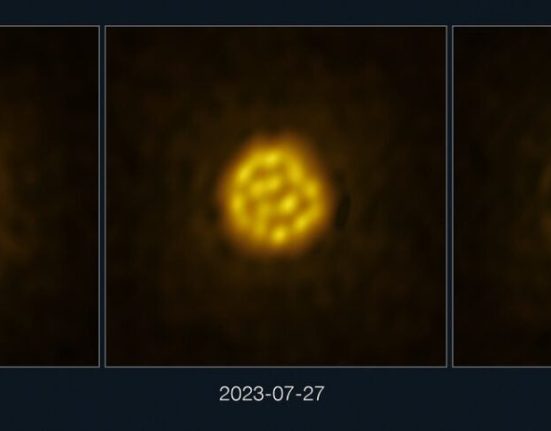
Leave feedback about this